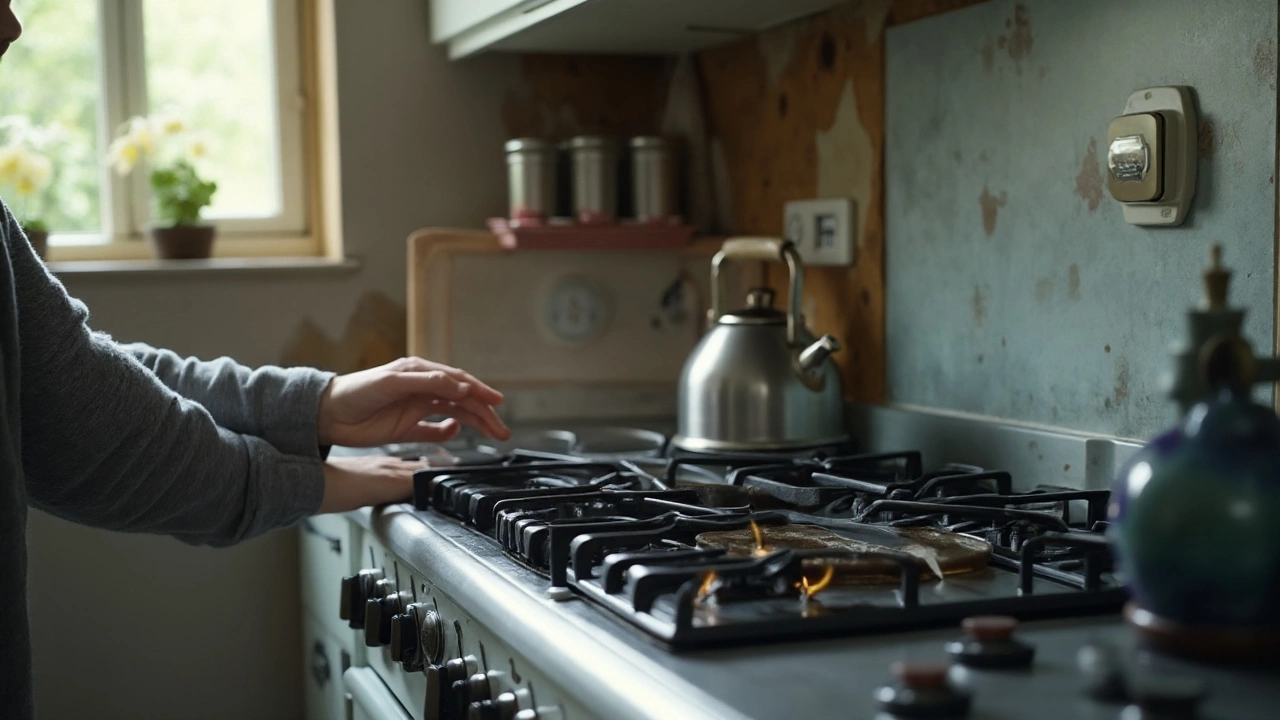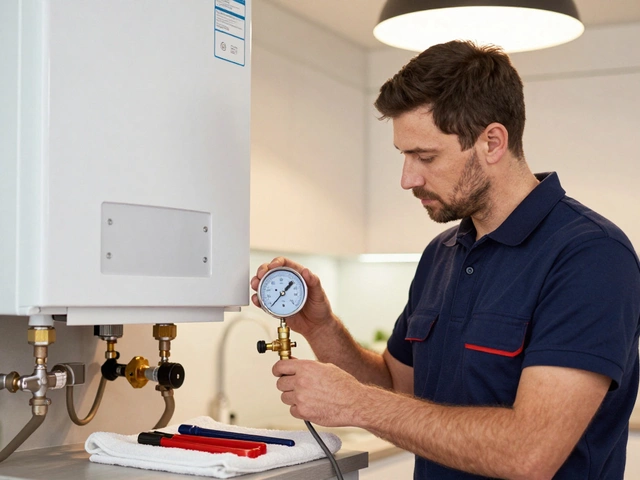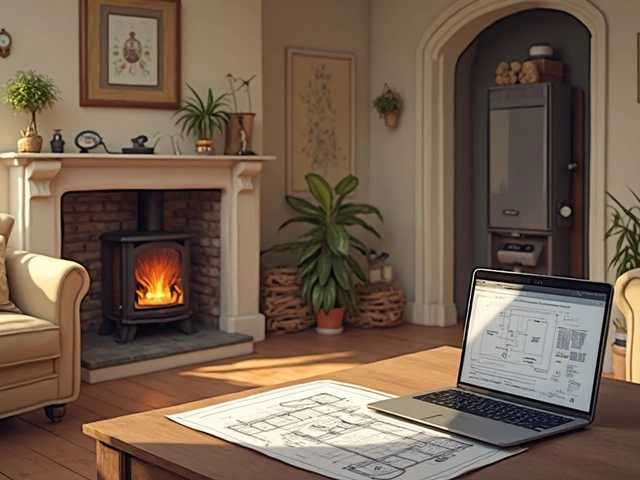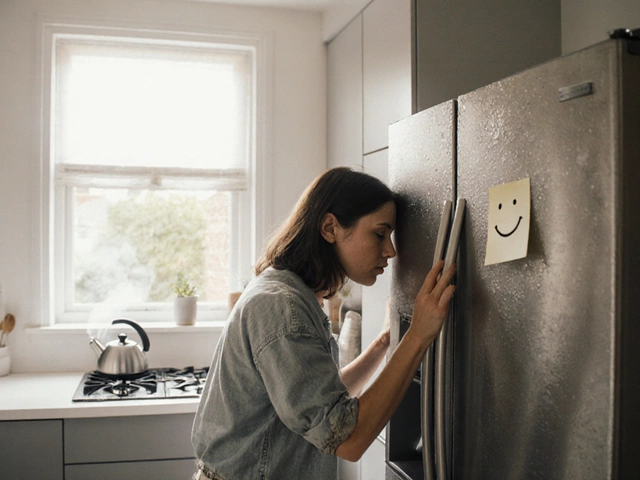If dinner is taking forever and your burners look lazy, your cooker might be on the way out. But not every weird sound or slow heat means you need a new one. A few quick, safe checks can tell you if it’s a real fault, a simple clean, or a breaker that tripped while you weren’t looking.
TL;DR: Fast checks and red flags
Short answer first. Here are the cooker broken signs you can trust-and what to do next.
- Smell gas (rotten egg odour) without a burner on? Turn the gas off at the isolation tap, ventilate, leave the area, and call your gas emergency line. Don’t troubleshoot; it’s unsafe.
- No power at all (no lights, clock dead)? Check the breaker/RCD labelled “oven” or “cooktop” and reset once. If it trips again, stop and call a licensed electrician.
- Oven not heating or painfully slow? Suspect a failed element (electric) or igniter/regulator issue (gas). Use an oven thermometer to confirm temperature.
- Gas flames yellow, lazy, or lifting off? Possible blocked burner, wrong air mix, or regulator problem. Clean first; if no change, get a gasfitter.
- Hob/induction beeps and won’t heat? Check pan type/size, child lock, and error codes. If still stuck, likely a sensor/board fault.
Expect to fix a minor issue in minutes (cleaning, pan mismatch, tripped breaker). Anything smelly, sparky, or that keeps tripping? That’s pro territory.
Step-by-step: Safe checks to confirm a fault
Work through these steps in order. Stop if something smells like gas, looks burnt, or keeps tripping.
-
Start with safety.
- Gas: If you smell gas, don’t switch anything on/off, don’t use flames, ventilate, turn the gas isolation tap 90° to off (usually behind or beside the cooker), leave, and call your gas distributor’s emergency number. In Australia, only licensed gasfitters can work on gas (AS/NZS 5601).
- Electric: If you see scorch marks, melting, or hear buzzing, switch off the cooker at the wall isolator or circuit breaker. Don’t keep testing it.
-
Confirm power/gas supply.
- Electric: Check the switchboard. Reset the breaker/RCD once. If it trips again immediately, there’s a fault.
- Gas: Make sure the isolation tap is parallel to the pipe (on). Other gas appliances working? If not, you might have a supply issue.
-
Rule out the simple stuff.
- Clock/timer: Many ovens won’t heat if the timer is in auto mode. Set the clock, switch to manual.
- Child lock: Look for a key icon on the display. Hold the indicated buttons (often 3-5 seconds) to unlock.
- Pans: Induction needs magnetic, flat-bottom cookware. If a magnet won’t stick to your pan base, it won’t work.
- Knobs: Push-to-ignite gas knobs need you to hold them in for 3-5 seconds to engage the flame safety device.
-
Clean and retest.
- Gas burners: Remove caps and rings. Brush off spills and carbon, clear the tiny jet holes with a wooden toothpick (don’t enlarge), dry, and re-seat parts properly.
- Electric radiant/solid plates: Make sure food spills aren’t stuck under pans. For solid plates, light rust can be scrubbed off; dry before use.
- Oven: Check door seal for gaps; heat pours out if the gasket is torn or loose.
-
Do a controlled heat test.
- Oven: Place a cheap oven thermometer in the centre. Set 200°C. A healthy oven reaches 200°C in about 10-15 minutes and stays within ±15°C. If it stalls at 120-150°C or swings wildly, the element, thermostat, sensor, or gas flame is suspect.
- Hob: Boil 1 L of water in a lidded pot. Electric radiant should boil in ~8-12 minutes on high; induction in ~4-7; gas in ~5-9 depending on burner size. Way longer than that points to a weak element, wrong pan, blocked burner, or low gas pressure.
-
Watch and listen.
- Gas hob: You should hear clicking for a few seconds and see a strong blue flame. Continuous clicking after ignition hints at a wet or misaligned igniter. No clicking at all? Ignition module or switch issue.
- Electric oven: Does the indicator light cycle on/off? No cycling at all could mean a failed thermostat or relay. Fan ovens should have a steady hum; rattles suggest a loose fan blade or failing motor.
-
Note any error codes.
- Digital displays often show codes (like F1, E15). Snap a photo. They map to specific faults in the manual.
If you reach a step that screams ignition module, element, thermostat, regulator, or control board-and you’re not qualified-stop there. In Australia, gas work must be done by a licensed gasfitter; major electrical work needs a licensed electrician. That’s not just advice; it’s the law.

Symptom decoder: Gas vs electric cookers
Use this section like a map. Find your symptom and match it to likely causes and quick fixes.
GAS COOKER (hob and oven)
- Smell of gas when off: Possible leak at a connection or faulty valve. Action: Turn gas off at the isolation tap, ventilate, leave, and call the emergency line. Don’t relight anything.
- Burner won’t light (no clicking): Ignition switch or module fault, blown fuse, no power to igniter. Quick check: Try lighting with a long match. If it lights, the gas is fine but the spark system needs work.
- Burner clicks but no flame: Blocked jets, misaligned cap/ring, or air in the line after a bottle change. Fix: Clean and reseat parts, try again. If still dead, get a tech to check jets/regulator.
- Yellow or lazy flame: Poor air-fuel mix from blocked air shutter, greasy parts, or regulator issue. Clean first. If unchanged, that’s a gasfitter job.
- Flame lifts/blows off or makes a roaring sound: Excess air or pressure. Don’t keep using it-call a pro.
- Oven goes out mid-cook: Faulty thermocouple/flame failure device, weak regulator, or wind drafts if it’s a flued model. Needs a gasfitter to test and replace parts.
ELECTRIC COOKER (radiant/ceramic/induction hob and electric oven)
- No lights, no heat: Tripped breaker/RCD, faulty isolator, or a failed terminal block in the cooker. Reset once. If it trips again, call an electrician.
- Radiant ring doesn’t glow or heats unevenly: Burnt element or bad connection. Visual check through glass can show dark patches. Usually a replacement element.
- Induction beeps, shows a pan symbol, but no heat: Pan not induction-ready, pan too small, or warped base. Try a different pan. If all pans fail, likely coil/board/sensor fault.
- Oven light works but it won’t heat: Failed bake element (bottom) or grill/broil element (top). Look for blisters or breaks. If both elements are fine, suspect thermostat, sensor, or control board.
- Oven overheats/burns food at the back: Bad thermostat or faulty fan circulation. Fan running but poor airflow suggests a loose or damaged fan blade. Replace fan motor or blade.
- Trips the breaker when heating: Element short to earth, moisture in wiring after a spill, or a failing control board. Needs testing with a multimeter and insulation tester-call a sparkie.
Door, seal, and racks (both types)
- Door doesn’t close tight: Bent hinges or worn seal leak heat and wreck cooking times. New seal is cheap and easy; hinges are a bit more involved but fixable.
- Condensation flooding the glass: Some fog is normal, but constant pools of water point to a failing door seal or poor venting.
Noise and smell clues
- Burning plastic smell: New ovens can off-gas on first use. Otherwise, look for a forgotten roasting string, a fallen tray liner, or melted knob. Persistent smell needs a check before use.
- Grinding or scraping: Often the fan blade hitting grease build-up or a warped blade. Clean first; replace if noise stays.
Repair vs replace: Costs, time, and lifespan in Australia
Here’s what typical fixes look like in 2025 in Australia. Prices vary by brand and region, but these ballparks help with decisions.
| Fault | DIY? | Typical Pro Cost (AUD) | Time to Fix | Notes |
|---|---|---|---|---|
| Oven door seal/gasket | Yes | $60-$150 | 15-30 min | Big heat loss if damaged; easy win. |
| Electric oven bake/grill element | No (recommended) | $150-$350 | 30-60 min | Common failure; parts widely available. |
| Oven thermostat/temperature sensor | No | $180-$320 | 45-90 min | Fixes under/overheating and wide swings. |
| Fan motor (fan-forced) | No | $180-$350 | 45-90 min | Noisy or uneven baking. |
| Gas hob igniter (per burner) | No | $120-$250 | 30-60 min | Includes electrode and labour. |
| Gas oven thermocouple | No | $150-$280 | 30-60 min | Prevents flame going out. |
| Gas regulator (household appliance) | No | $150-$300 | 30-60 min | Low/lifting flames fixed. |
| Induction hob power board/coil | No | $300-$600+ | 60-120 min | Often worth it on mid-high models. |
| Control board (oven) | No | $300-$600+ | 60-120 min | Check warranty; pricey part. |
| Call-out/diagnosis | N/A | $120-$200 | 30-45 min | Often credited if you proceed with repair. |
Rule of thumb for replace vs repair
- If the repair is more than 50% of the price of a similar new cooker and yours is 8-10+ years old, lean toward replacement.
- Freestanding electric cookers: ~$700-$1,300 entry-mid. Gas: ~$900-$1,700. Dual-fuel: ~$1,200-$3,000+. Built-ins can cost more.
- Elements, thermostats, seals: usually worth fixing. Control boards, induction power modules: case-by-case, check parts availability.
Lifespan
- Electric ovens/hobs: 10-15 years with steady use.
- Gas cookers: 12-20 years if serviced and kept clean.
- Heavy baking or salty coastal air can shorten life of elements and electronics.
Warranty and consumer law (AU)
- Check your receipt and the serial plate (usually behind the door or back panel). Many brands offer 2 years, some 3-5 on parts like elements or electronics.
- Under Australian Consumer Law, you’re entitled to a remedy for major failures-repair, replacement, or refund-even outside the written warranty if it’s reasonable for the product’s age and price. Keep records and describe the fault clearly.
Safety and recalls
- Cooking is the leading cause of house fires according to state fire services, including the SA Metropolitan Fire Service. Never leave a heating pan unattended.
- If your model has had a safety recall (knobs melting, gas leaks, faulty wiring), stop using it until assessed. The ACCC publishes recalls.
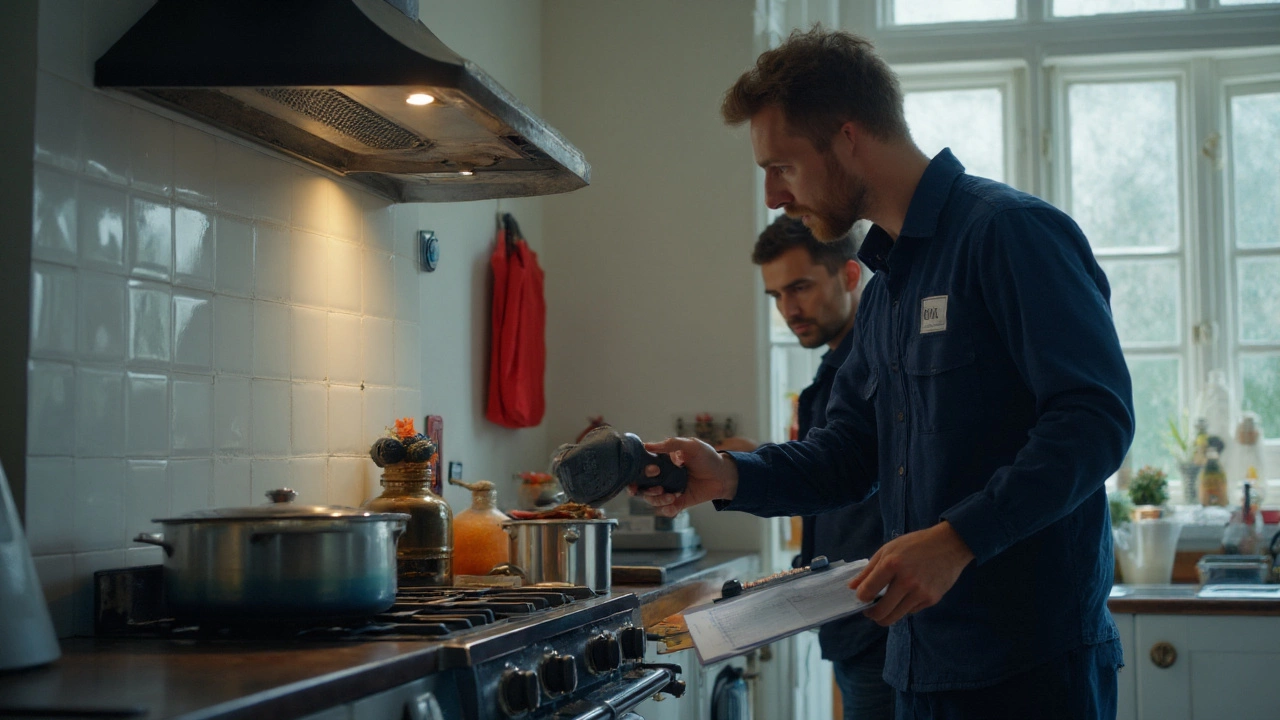
Checklists, FAQs, and what to do next
Bookmark this section. It’ll save you time the next time something goes wonky at 6 pm.
Quick diagnostic checklist
- Power: Breaker/RCD on? Oven light/clock on?
- Gas: Isolation tap on? Other gas appliances working?
- Controls: Timer not stuck on auto? Child lock off?
- Cleanliness: Burner ports clear? Oven fan area free of gunk? Door seal intact?
- Test: Oven hits set temp within 10-15 minutes? Hob boils 1 L water in expected time?
- Observe: Any error codes? Strange smells? Tripping?
Decision helper
- No power whatsoever → Check breaker once → Trips again? Electrician.
- Gas smell → Shut off gas and ventilate → Leave → Emergency line → Gasfitter.
- One burner weak → Clean and reseat → No change → Gasfitter.
- Oven underheats → Confirm with thermometer → Element/sensor likely → Technician.
- Induction rejects pans → Try known magnetic pan → Works? Replace cookware. Doesn’t? Technician.
Mini-FAQ
- How do I know if it’s the oven element? If the oven light and fan work but there’s no heat (or heat only from the top when grill is on), the bake element is likely blown. Visible blisters or breaks confirm it.
- My gas burner keeps clicking after it’s lit. Dangerous? Usually not dangerous, but annoying. The igniter tip may be wet or misaligned. Dry and clean it; ensure the cap sits flat. If it still clicks, the switch or module may need replacing.
- Why does my cooker trip the breaker only when heating? Heating elements can short to earth as they expand. Moisture from a spill can also cause a trip. If it happens more than once, stop using it and call a licensed electrician.
- Oven is 30°C off. Can I just adjust the dial? Many digital models allow calibration. If it’s consistently off by more than ~15°C, test the sensor/thermostat instead of masking the issue.
- Should I turn gas off at the tap after each use? Not necessary for normal operation, but do turn it off when cleaning, moving, or if you suspect a fault.
- How do I find the model number? Check behind the oven door frame, the lower drawer, or the back/side of a freestanding cooker. Take a photo for parts ordering.
Pro tips from the field
- Use a $15 oven thermometer. It cuts guesswork and stops you from blaming recipes.
- Keep burner parts dry. A splash during cleaning can cause hours of no-light and clicking.
- Induction loves flat, heavy pans. Wobbly bases waste energy and confuse sensors.
- Replace door seals early. They’re cheap and improve every bake.
What to do next-by situation
- Renter in an apartment (Adelaide or anywhere): Do the safe checks, document with photos/video, and report to your property manager. Don’t attempt repairs; you could breach your lease or the law.
- Homeowner with a freestanding cooker: After basic checks, book a licensed tech with your model number and clear fault description. Ask for a diagnosis quote and parts availability before they arrive.
- Rural/regional: Ask the tech about parts lead times. If a control board is backordered for weeks, weigh the cost of a stopgap hotplate or benchtop oven.
- Under warranty: Contact the manufacturer’s service line first. Unauthorized repairs can void coverage.
When to stop and call a pro immediately
- Any suspected gas leak or persistent gas smell.
- Electrical burning smell, smoke, or visible scorching.
- Repeated breaker/RCD trips when heating.
- Flames lifting off burners or roaring abnormally.
- Water ingress into controls after a spill.
Why listen to safety advice here? In Australia, gas installations are governed by AS/NZS 5601 and must be done by licensed gasfitters. Electrical work on fixed appliances requires a licensed electrician. Fire services across Australia, including the SA Metropolitan Fire Service, consistently report cooking as a leading cause of home fires. The ACCC regularly publishes cooker recalls for hazards like gas leaks and faulty knobs. These aren’t scare lines-they’re the guardrails keeping your kitchen, and everyone in it, safe.
If you’ve worked through the checks and the cooker still misbehaves, grab your model/serial, note the symptoms and any error codes, and book a tech. Clear notes save you a second visit, which saves money. And if the quote nudges past half the price of a comparable new unit-and your cooker is getting on-it’s probably time to replace.

